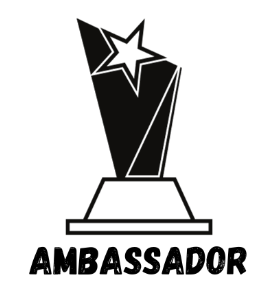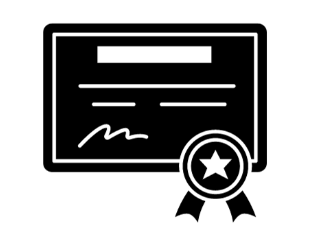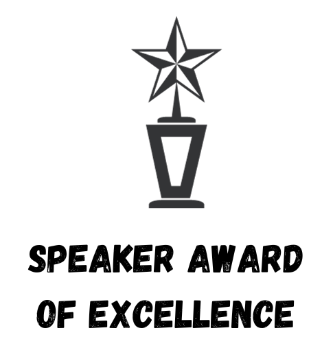We get all caught up in categories. We get hung up on names like B2B and B2C. Instead, we need to focus on how to humanize marketing messages by speaking directly to our prospects. We need to write H2H.
Humanizing marketing is making it personal so readers connect with us more easily. When our prospects connect with our message, they identify with our brand and what we stand for. That leads to increased sales and higher Customer Lifetime Value.
Table of Contents
I see posts in chat groups and get emails like this regularly. Usually, the comment goes something like the one my friend Teri sent me.
“I’ve got a new prospect in my niche, but they are B2B. I’ve looked in all the training I’ve taken, but nothing really focuses on B2B.”
“So what can you tell me about the prospect? How big is the company?”
“He’s a very committed eager business owner. So I want to be sure an offer him the best B2B approach.”
Ah-ha! This scenario is a common issue where I see many people get confused.
B2B defines as businesses that sell to other companies. Her prospect matches that.
However, most B2B courses are focused on manufacturing. They are often larger companies where a whole buying process exists, more like dealing with a committee than a person. Each stakeholder comes with different needs and views.
This buying process isn’t the scenario Teri is facing. She’s not dealing with a committee. Teri’s dealing with a single person. It’s much easier to deal with one decision-maker. She needs to focus on her prospect’s target market and help him craft messages to reach them effectively. The tone of the message content will be the only shift from standard B2C writing.
For over twenty years, I’ve dealt with a branch of my business that sells B2B. But like Teri’s prospect, we aren’t classical B2B manufacturers. Instead, we deal with licensed professionals who buy our products to use in offering services to consumers. So technically, it’s B2B, but it is closer to B2C in the decision-making process, just like my friend’s situation.
The writing tone to small business owners is less formal than classic B2B. Our audience mindset is a combination. They think both like a consumer and a business owner. It’s essential to their success as they have so much on the line. Instead, they want H2H communications.
What I shared with Teri is to quit worrying about the labels. Instead, focus on humanizing—writing human to human.
Business success is dependent on engagement. Without engagement, we can’t connect with another human being—our message gets lost. Companies don’t sell to companies. It’s the humans inside those companies connecting with other humans. Marketers and writers need to focus on those humans.
In the fast-paced world of marketing, there are lots of parameters to consider. First, it’s critical to get the right offer and message. Then you need to deliver it to the right person. We become obsessed with subject lines, graphics, and coming up with the latest and greatest.
I’d like to suggest hitting pause. Think about the individual you are trying to engage. What are their goals, needs and how can you help them. Then talk to them—one human to another. Humanize it.
An honest, person-to-person approach is the best marketing.
Humanizing your marketing is all about having a conversation with another person. There is NO generic feeling. There should be NO sense the same message is going to a group or list.
Instead, the focus is more like sharing information with a friend over coffee or a glass of wine. The tone reflects your audience, ranging from more casual to professional. I liken it to attending a conference and visiting with a colleague at the end of the day. You are engaging one professional to another but in a very conversational way.
Segment your audience, dividing groups to speak to them in a more specific way. Grouping allows you to hone into their interests, concerns, and needs. Segmenting makes your message more targeted, engaging and improves ROI.
Sometimes segmenting may seem a little elusive. That’s because most B2B businesses attract diversity in prospects, even if they employ targeted marketing. Segment them based on the company’s size, differences in what they offer/need, or the different pathways they found you. These pathways may impact their level of awareness about your business.
Segmenting by the level of awareness is a primary technique to share the message in the proper order and intensity. First, categorize your segments for your particular audience. Then, use the targeted approach to enhance message engagement and ROI.
Post your photo. When readers see a person’s picture, it’s easier for them to connect. You want your business to be the people that make up the business. If you have a team, you can showcase your team, their goals, successes, and even outside activities.
You want communications that come across as authentic, honest, and genuine. Share your story, how and why you built this business. Maybe you were your ideal client. Now you’ve overcome a health, weight, or fitness challenge. Those stories let your prospects see hope and a chance for themselves.
In today’s world, prospective clients also want to know what a business stands for. So share your values and opinions. For example, let them know how you give back, support the community, and help protect the planet.
I learned this from one of the most engaging marketers I’ve ever listened to, Brian Kurtz. Author of “Overdeliver” and founder of Titans Marketing, he excels at giving prospects and clients more than they expect.
Like all the presenters at this conference, he finished with an offer. Buy the “offer,” and he included a collection of “extra bonuses” that were mind-boggling. His sales rate was astronomical. Why? It was too good a deal to pass up.
Have I gone through all of the bonus segments? No, but I got great value from an excellent investment. (You want your prospect to respond the same way.)
If you want to connect with your target audience, be like Brian. Be a giver. Give them so much extra value that any other choice looks crazy. You may not be the cheapest out there, but if what you offer is five-ten times the price in value, you will get their attention. You have become a unique and no-brainer decision.
The bonus value doesn’t mean the offer requires a slashed sale price.
There are many ways to offer a bonus or extra value. For example, consider a free report, checklists, guides, infographics, podcasts, or a recording from a live event. Amaze them with the extra value you include and a moderate-priced offer. In addition to a sale, you get their contact information. This pure gold allows you to add them to your list/funnels.
Focus on what will appeal to your prospective client. Then when you write for those clients, do the same thing for their target audience. Help them be a giver so they can reap the rewards that extend far beyond an initial sale.
Judith Culp Pearson is a freelance copywriter marketer. She specializes in helping businesses build relationships that result in loyal customers with high customer lifetime value. Contact: [email protected] or schedule a call here:
 Judith Culp Pearson receives three top honors
Judith Culp Pearson receives three top honors
at the annual Society of Permanent Cosmetic Professionals in
Ft. Worth, Texas - October 7-9, 2023




